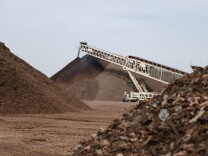
Next Up:
0:00
0:00
-
Listen Listen
Climate & Environment
A slightly warmer day on tap, with highs in the mid 70s and blustery conditions.
Sponsored message
More Stories
-
Sometimes, weather is just weather. And other times human-caused climate change had an obvious impact.
-
These photos chronicle the catastrophic scale of destruction from wildfires in L.A. County that started on Jan. 7.
-
Firefighting efforts got a leg up Tuesday from weaker than predicted winds — but harsh fire conditions are still in the forecast.
-
"People have lost everything," says FEMA administrator Deanne Criswell. More than 24,000 have already applied for assistance from FEMA, but Criswell says that number is certain to rise.
-
In a city prone to large natural disasters, L.A. firefighters are widely considered to be among the best in the business at knocking down urban wildfires. But in the extreme conditions lately, experts say little can be done even to slow these modern fires.
-
With fire danger still high, authorities implore you to follow evacuation orders. Lives are at stakeHeroic rescues. Heartbreaking tragedies. And no need for many of them, emergency response leaders say.
-
Palisades fire victims can get everything from clothes to toiletries to dog food, donated by their neighbors at a Santa Monica shop known for posh dress rentals.
-
Prominent right-wing influencers are claiming that the response to the Los Angeles wildfires was hampered by workplace diversity policies. It's part of a wider strategy to discredit those policies.
-
At least 153,000 Los Angelenos have had to evacuate their homes and about 166,000 people were under evacuation warnings as of Saturday, according to the LA County Sheriff's Department.
-
LAist dives into the science behind the claim that the brush clearance would have 'significantly mitigated' the destruction and losses.
-
“We have a lot of abnormal incidents that are layered over our normal everyday operations, which makes it seem even worse,” an LAFD spokesperson said.
-
If you have a question about the firestorm, let the LAist newsroom know.
The Interior Department released its plan to open up federal waters off California’s coast to oil drilling, setting up a direct confrontation with Sacramento on energy and climate change.
Support your source for local news!
In case you missed it
-
911 recordings obtained by LAist shed light on why and how emergency planning continues to leave people with disabilities behind.
-
LAist investigates illicit dumping at three Antelope Valley sites.
-
An LAist investigation found toxic heavy metals in samples of fire retardant collected from the Palisades, Eaton and Franklin fires. Here's what that means.
More Stories
-
Construction could soon begin on a housing development 18 years in the making, in the hills above Sunland-Tujunga, but local wildlife advocates are rallying for the project to come to a halt.
-
The L.A. Department of Water and Power's Board of Commissioners voted unanimously to end the practice of shutting off power when people can't pay their bills during extreme heat.
-
Getting Food Out Of Landfills Is A Big Climate Solution. So Far California Is Lagging On Its EffortsA new report finds the state missed its 2020 goal and is likely to miss its 2025 goal as well.
-
It’s a combination of geography, atmospheric conditions and how we build.
-
Across Southern California, facilities used to treat marine mammals are full.
-
The exact time of the solstice is determined by where the sun is in the sky. During summer, the sun reaches its highest point of the year at noon and its lowest point at the winter solstice.
-
L.A. requires all new buildings to be all-electric, but retrofitting existing buildings is the bigger challenge — and has implications for renters.
-
It’s one of the reasons the fire department is relying more on mobile water stations for their helicopters.
-
New federal funding will help coastal communities fight against rising sea levels and strengthen the electric grid during heatwaves, storms, and other climate events.
-
Benzene is among the pollutants gas stoves emit into homes, Stanford University researchers show. The toxin is linked to a higher risk of leukemia and other blood cell cancers.




































